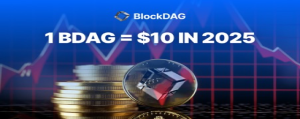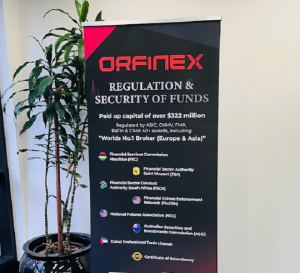Crypto Derivatives 101: A Beginner’s Guide To Futures, Options & Swaps
The world of crypto trading has long since evolved from the basic concept of buy, sell and hold. These days, smart money does more than just invest and hold the coins it thinks are the most likely to see their value multiply. Smart money sees bigger gains to be had from venturing into the world of crypto derivatives, which provide distinct advantages over basic trading.

In simple terms, a crypto derivative is a financial contract between two or more parties, where the value of that contract is derived from the underlying asset it’s based on. The contract itself is an agreement to buy that specific asset – be it Bitcoin, Ethereum, or some other cryptocurrency – at a predetermined price at a specified time in the future.
The crypto derivatives market has three common products, namely crypto futures, crypto options and crypto swaps.
Crypto Futures
The first crypto derivatives market to go mainstream was the futures market, which remains the most heavily traded in terms of volume.
Crypto futures are the most basic kind of contract, similar to what is described above. When entering a crypto futures contract, the first thing a trader needs to decide upon is the duration of the contract. Most exchanges offer numerous options, such as weekly, bi-weekly, monthly or quarterly contracts. So let’s say our trader wants to open a weekly BTC contract, with each one valued at $1 when the price of BTC is at $10,000, that would mean they need 10,000 contracts.
The trader then has the option to go long, or bet the price will increase, or go short, betting the price will decrease by the time that contract has expired.
When the trader opens their position, the exchange will match that contract with someone betting the opposite outcome. When the contracts are settled one week later, one of the two traders will have to pay the other. So if our trader decides to go short and the price of BTC declines, they will have made a profit. However, if the price goes up, that will result in a loss for our trader.
Where to trade crypto futures?
One of the best platforms for crypto futures is SynFutures, which is a next-generation derivatives platform that relies on smart contracts that hold liquidity reserves, working according to defined pricing mechanisms. The great advantage of SynFutures is it uses a Synthetic Automated Market Maker, which enables participants to provide just a single asset from their trading pair, with the smart contract synthesizing the other. It also uses an Automated Liquidator to automate the liquidation process, reducing the barrier to entry for liquidators.
Another unique feature of SynFutures is it allows futures contracts on non-fungible tokens allowing traders to bet on the price of multiple types of NFTs without needing to own those assets.
Crypto Options
Options contracts are similar to futures in that they also follow the price of a specified cryptocurrency, however, they differ as they do not have to be settled at their expiration date. Instead, traders have the option to buy or sell at predetermined prices at specified future dates.
With crypto options, investors don’t pull or short but rather “call” or “put”. The “call” option refers to the trader’s right to purchase BTC at an agreed price when the contract expires, while “put” gives the other party the right to sell at the agreed prices. In both cases, it’s up to the trader to decide whether or not they wish to exercise their right to buy or sell.
Let’s say our trader buys a call option for BTC at $10,000 and it expires in one week. It means that they’ll have the option to buy one BTC for $10,000 (known as the “strike price”) exactly one week later. If the price of BTC has since risen to $12,000, the trader will likely want to exercise their call option and buy BTC at a cheaper price, as it means they can immediately sell for a $2,000 profit. Alternatively, if the price drops under $10,000, the trader will most likely allow the option to expire, as buying at that price would mean losing money.
That’s not to say crypto options are a risk-free method of trading, as traders are required to pay a premium to enter each contract. The premium varies from exchange to exchange but must be paid regardless of whether the trader decides to call or put.
Where to trade crypto options?
A popular crypto options trading platform is Deribit, which offers hundreds of crypto trading pairs with daily cash settlement in BTC and a maximum of 1,000,000 contracts, worth up to $10 million. It allows traders to take advantage of up to 100x leverage when trading BTC options, with premium fees of just 0.04% or the underlying contract. In addition, users can also test their trading strategies on the Deribit testnet with up to 10 BTC worth of demo funds.
Crypto Swaps
Crypto swaps, also known as perpetual contracts, are futures contracts that come without an expiry date. Because there is no expiration date, neither party has to buy or sell. Rather, they can keep their position open for as long as they have the funds to cover that contract.
The main difference with Swaps contracts is that, unlike standard futures where underlying asset and contract price converge at the expiration date, a different mechanism known as the “funding rate” is used to enforce price convergence.
The funding rate is a fee that’s exchanged between two parties in a contract, as opposed to a fee collected by the exchange. The rate of the funding fee varies, determined by the market, and acts as a balance to ensure that, when a contract’s value keeps rising, shorts have an incentive to keep the contract open. So for example, if a swap contract is trading at $9,000 but BTC’s spot price is $9,005, the funding rate will be negative to account for the difference, meaning the short party in the contract must pay the long holder. However, if the contract price is higher than the spot price, there will be a positive funding rate, meaning the long contract holder must pay the short holder.
In both cases, the funding rate helps to promote traders to open new positions that can help bring the contract price closer to the spot price.
On most exchanges, swap funding rate payments are made every eight hours as long as both parties keep their positions open. On the other hand, profits and losses are settled daily and credited to the trader’s account automatically.
Where to trade crypto swaps?
Crypto swap exchanges are a lot less common, with BitMEX being one of the few platforms to offer contracts in Bitcoin, Ethereum, Cardano, Bitcoin Cash, Litecoin and XRP. One of the things that differentiate BitMEX is its rebate fees for makers and takers, with maker fees of -0.025 BTC and -0.05% on other coins, and taker order fees of 0.05% for BTC and 0% for other tokens.









